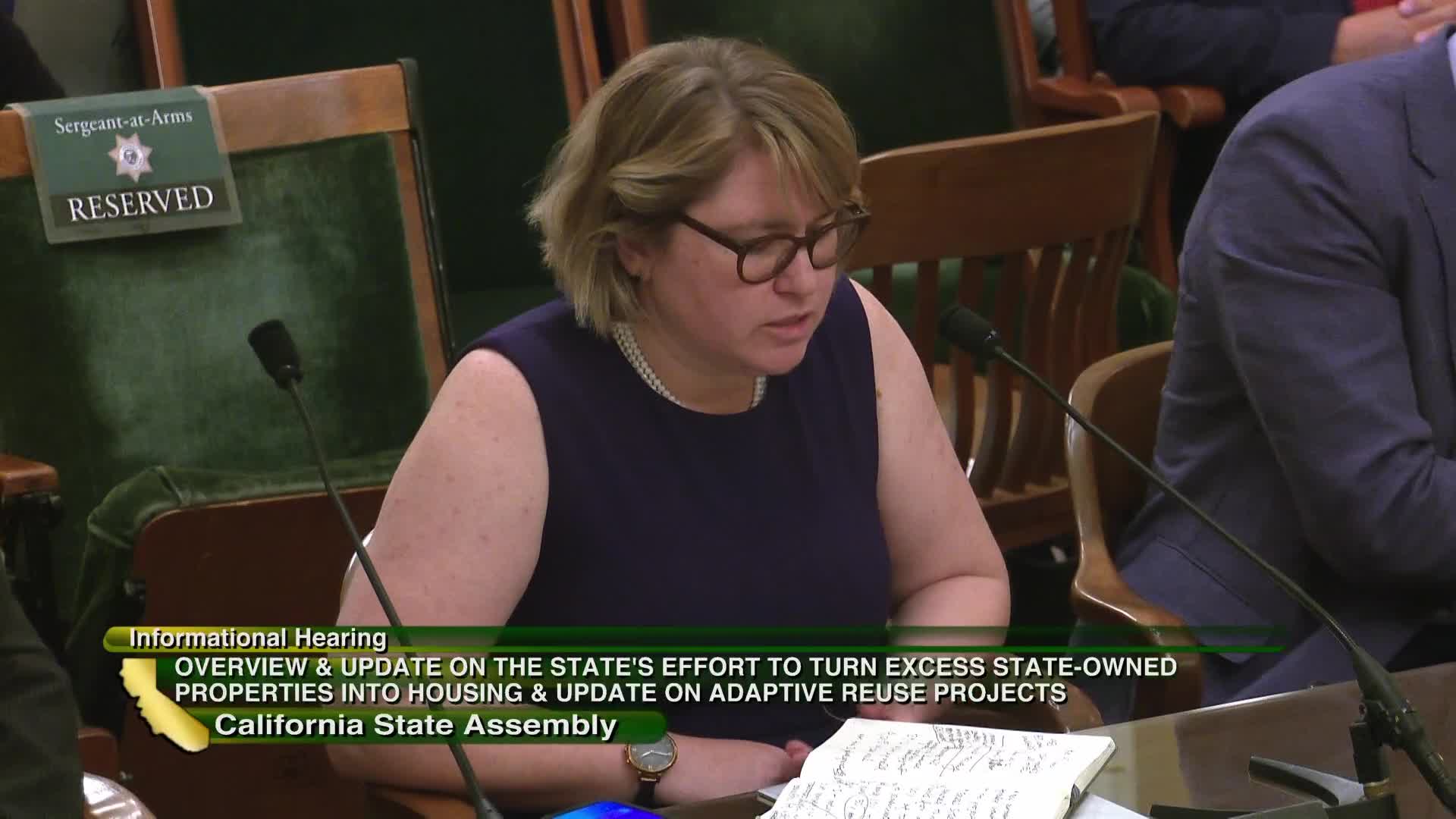Innovative housing project tackles California's affordable housing crisis
August 07, 2024 | California State Assembly, House, Legislative, California

This article was created by AI summarizing key points discussed. AI makes mistakes, so for full details and context, please refer to the video of the full meeting. Please report any errors so we can fix them. Report an error »

In a recent government meeting, officials discussed significant advancements in affordable housing initiatives, highlighting partnerships and innovative strategies aimed at addressing the housing crisis in California. The collaboration between the Housing and Development Department (HDD) and the Department of General Services (DGS) was emphasized as a crucial element in facilitating affordable housing projects across the state.
Key points included the requirement that at least 20% of units in state land developments must be allocated for lower-income households, with a specific focus on those earning 50% or less of the area median income. Currently, the average income level served by these developments is approximately 47% of the area median income, with a notable number of units designated for extremely low-income households and individuals transitioning from homelessness.
The meeting also highlighted the introduction of a local government matching grant program, designed to incentivize partnerships between developers and local governments. This program allows for various forms of local support, such as deferred fees or donated land, to enhance the financial viability of affordable housing projects.
Danielle Foster, Executive Director of the Capital Area Development Authority (CADA), shared insights from their successful project, Sunresa, which exemplifies the innovative approaches being adopted. The development features micro-units, energy-efficient designs, and community services, aiming to serve a diverse range of income levels. Notably, 38% of the units are affordable to households earning 40% of the area median income or below, with additional support for those utilizing voucher programs.
Foster underscored the importance of leveraging local resources and fostering community engagement to ensure the success of such developments. The meeting concluded with optimism about ongoing projects, including the upcoming phases of Sugar Pine Village and other developments breaking ground, which are expected to contribute significantly to the state's affordable housing landscape.
Overall, the discussions reflect a proactive approach to tackling housing challenges, emphasizing collaboration, innovation, and a commitment to serving vulnerable populations in California.
Key points included the requirement that at least 20% of units in state land developments must be allocated for lower-income households, with a specific focus on those earning 50% or less of the area median income. Currently, the average income level served by these developments is approximately 47% of the area median income, with a notable number of units designated for extremely low-income households and individuals transitioning from homelessness.
The meeting also highlighted the introduction of a local government matching grant program, designed to incentivize partnerships between developers and local governments. This program allows for various forms of local support, such as deferred fees or donated land, to enhance the financial viability of affordable housing projects.
Danielle Foster, Executive Director of the Capital Area Development Authority (CADA), shared insights from their successful project, Sunresa, which exemplifies the innovative approaches being adopted. The development features micro-units, energy-efficient designs, and community services, aiming to serve a diverse range of income levels. Notably, 38% of the units are affordable to households earning 40% of the area median income or below, with additional support for those utilizing voucher programs.
Foster underscored the importance of leveraging local resources and fostering community engagement to ensure the success of such developments. The meeting concluded with optimism about ongoing projects, including the upcoming phases of Sugar Pine Village and other developments breaking ground, which are expected to contribute significantly to the state's affordable housing landscape.
Overall, the discussions reflect a proactive approach to tackling housing challenges, emphasizing collaboration, innovation, and a commitment to serving vulnerable populations in California.
View full meeting
This article is based on a recent meeting—watch the full video and explore the complete transcript for deeper insights into the discussion.
View full meeting
